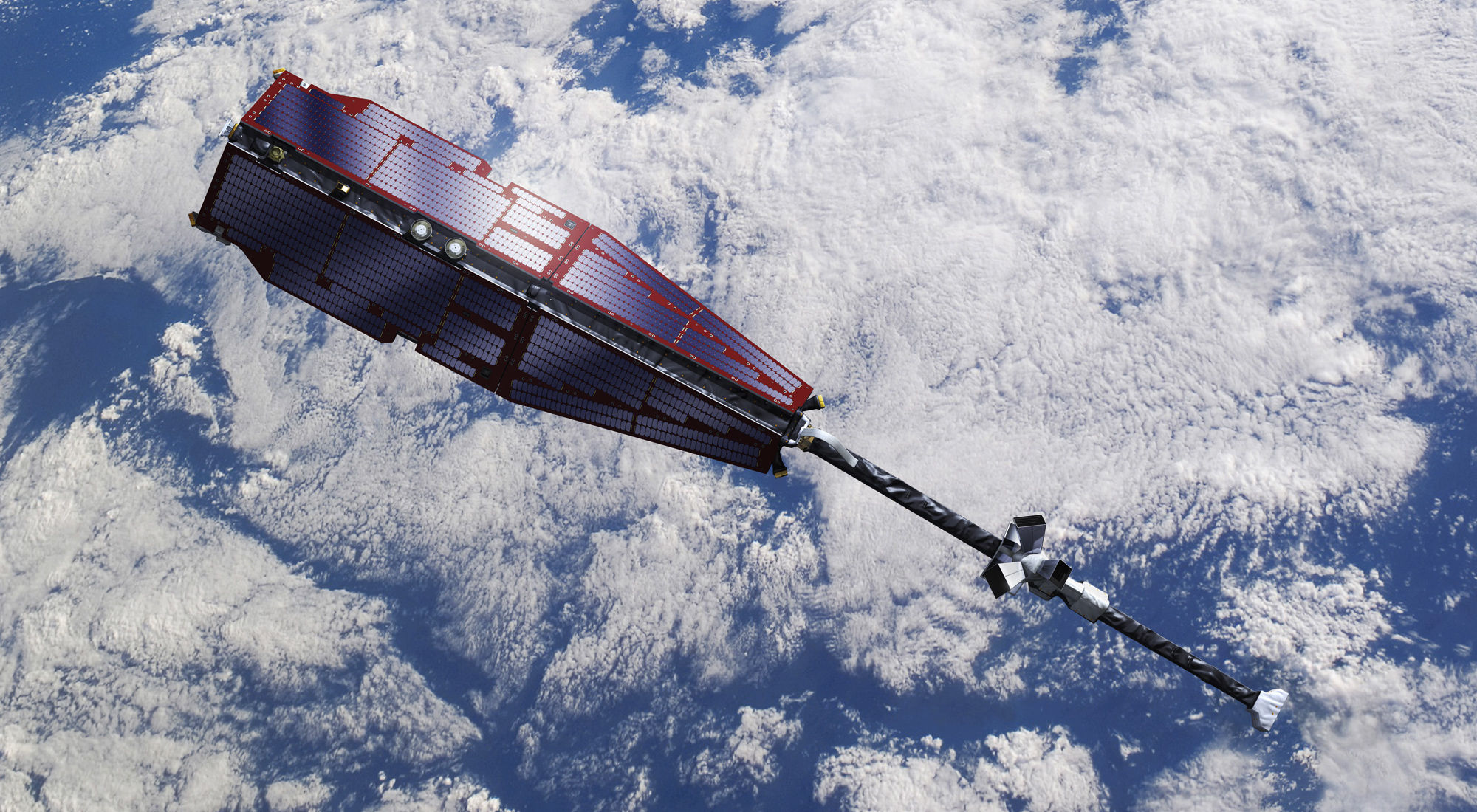Create a free profile to get unlimited access to exclusive videos, sweepstakes, and more!
Whistling above a lightning storm

One of the fun things about being a science communicator is constantly reading up on the latest research and exploration results. Mind you, many times the findings from some study or another are incremental, while much more rarely they’re big leaps.
And sometimes the result is something of which I was completely clueless. This is the most fun: I get to learn something! And it’s something cool!
In November 2013, the European Space Agency launched a trio of identical satellites called Swarm (the three individuals are Alpha, Bravo, and Charlie). The purpose of these satellites is to study the Earth’s magnetic field: To survey it from space, see how it changes, and to understand better how it’s generated inside our planet and how it interacts with the Sun.
This year, a couple of new results were found. One was that, during a period when the detectors were being run in a slightly different way than usual, they were able to detect the effects of lightning on the Earth’s magnetic field! Lightning is a very powerful and very brief current of electricity, and a basic law of physics says that when you have a big surge of electrons like that it makes a burst of radio waves. These move outward and can interact with the Earth’s ionosphere, the layer of the atmosphere were the atoms have been stripped of one or more electrons, which in turn affects the Earth’s magnetic field locally.
That layer runs from 80 to 1,000 km above the Earth’s surface, and the Swarm sats are around 500 km up, so they can detect these interactions with the ionosphere. The way things work out, the high-frequency stuff moves faster through the atmosphere, so the satellites detect those frequencies first, then lower ones a split second later. If you translate that into sound, it’ll be a high pitch quickly dropping to a low one, so these kinds of emissions are called whistlers. The folks at ESA made a video where they’ve done this, so you can hear them:
Eerie! And remember, these aren’t actually sounds, but radio waves converted into sound. I’ve written about this before, talking about lightning on Jupiter. Here’s another recording of Earth whistlers translated into sound, too, just because they’re so nifty and weird.
So yeah, I already knew about the physics of this (though the cool thing here is that very few whistlers have been detected at these frequencies before, so Swarm’s harvest of 4,000 of them is a huge bounty). But the new thing I learned is even cooler.
Sometimes, the Sun throws off a huge storm of particles. These can add up to a billion tons of ionized gas screaming away at a million kilometers per hour or more. If one hits us, the particles interact with our own magnetic field, wreaking all manner of havoc. I’ve written about this before as well if you want details, and wonder what sort of thing I worry about as an astronomer.
What I didn’t know, and what Swarm has shown well, is that not all the energy from the solar storm goes into the Earth’s magnetic field. The ionosphere acts as a huge conductor around the Earth, and the storm can generates huge currents in it. But there’s some resistance, like in a copper wire, and that generates heat. A lot of it. And when you heat up a gas, what does it do?
It expands. During a big solar storm on St. Patrick’s Day (March 17), 2015, just such an event occurred. As Swarm orbited the Earth, it detected a big increase in density as the ionosphere below it expanded, sending air up into its path. Here’s a video showing that; the storm really gets going about 40 seconds in. Note the scale on the right; usually the atmospheric density is about 1 gram per cubic kilometer at 470 km above the Earth’s surface, but during the storm it tripled.
To be fair, 3 grams per cubic kilometer is incredibly thin. At sea level, air has a mass of about 1 gram per liter, which is a trillion times more dense! So we’re not talking a lot of stuff up there. But it’s there, and during a solar storm satellites are plowing through more material than usual. This acts like a drag, dropping them down lower in their orbit… where the air is thicker. That slows them down more, so they drop more.
You can see where this is headed. If a satellite is already in a very low orbit, a good solar storm can spell disaster! So engineers and space scientists need to understand exactly how this works to help them keep our assets in orbit.
To be clear, I knew the atmosphere expanded in a solar storm, but I didn’t know exactly why. Now I do. And now you do too!
Our Earth is a complicated beast, with a lot of moving parts. I don’t expect anyone knows everything about it. But I’m always happy to learn one more thing, or take something I know a little about and expand my knowledge. That’s a big part of science.














